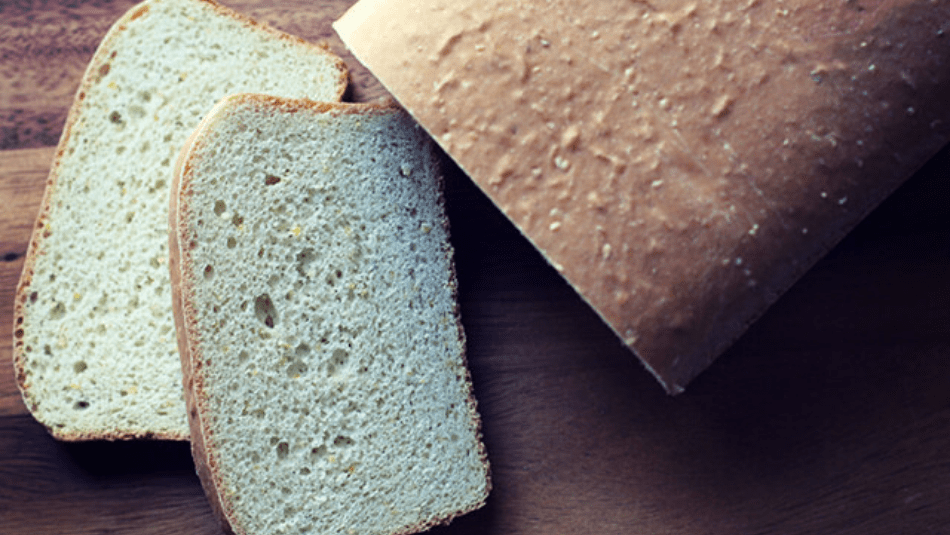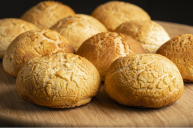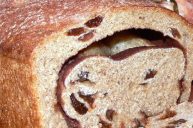Freshly baked bread. It's on everyone's minds. With loads of time to bake it, families are looking to make their own loaves at home not only out of necessity (the bread aisles are still half-empty) but as a form of comfort. Unfortunately, a lot of people have had the same idea, and yeast is hard to come by. Thankfully our Appalachian ancestors in Kentucky, West Virginia, Western New York, and Western Pennsylvania came up with a solution when active dry yeast wasn't available at the general store. Instead of using yeast, the Salt rising bread recipe uses naturally occurring Clostridium perfringens and other bacteria to give the loaf of bread the rise it needs.
Note: The bacterium Clostridium perfringens is known to cause food poisoning such as gan gangrene, however according to The West Virginia Medical Journal, The baking process appears to reduce bacteria to safe levels.
What is Salt Rising Bread?
https://www.instagram.com/p/eNRDHtv9rx/
While it may be named salt rising bread, this bread is not leavened by salt nor does it taste salty. Historians suggest the name came from when bakers used heated salt to keep the starter warm. Like a sourdough starter, this bread starter needs time to proof in a warm place. One thing to note is that this starter smells a little funky. If it smells like very ripe cheese, you're doing it right! Unlike sourdough, this starter uses cornmeal instead of all-purpose flour.
How to Make Salt Rising Bread
Start this bread the night before you plan to bake it. First, heat your water until almost boiling, just small bubbles around the outside of the pan. Add this to a heatproof medium-size bowl along with cornmeal, 1/4 tsp salt, baking soda, and sugar and combine. Cover with plastic wrap and place it in a warm place to proof for 8 hours. We found that using the oven with the light on kept it at the perfect temperature.
The next morning, smell your starter. Does it smell like parmesan? If so, you can move on with the next steps. If your starter doesn't smell, it means it didn't work and it's time to restart the process.
To your smelly starter add the milk, 1/2 teaspoon salt, and enough all-purpose flour to make the starter look like thick pancake batter, about 4 cups. Cover the bowl with plastic wrap and place the bowl into a container of warm water (between 90°F and 100°F). You'll have to continually switch out the water, and keep the container in a warm place, like your oven. Do this until your mixture has doubled in size, about 2-4 hours.
https://www.instagram.com/p/B-pFlDKJo6f/
By now your dough should be bubbly and climbing up the sides of the bowl. Add to your stand mixer along with the remaining salt, butter, and 2-4 cups of flour. Knead until smooth, about 10 minutes.
Divide the dough into three loaf pans and let rest until doubled, about 1 hour. Preheat your oven to 375F.
Bake the loaves for 30-40 minutes and brush with butter after removing from the oven. Let cool and slather with butter.
https://rumble.com/embed/u7gve.cc49br/

Salt Rising Bread
Ingredients
- 1 1/2 cups water
- 1/2 cup yellow cornmeal
- 2 tsp salt, divided
- 1/8 tsp baking soda
- 1 tsp sugar
- 4 cups milk
- 6-8 cups all-purpose flour, divided
- 3-4 Tbsp butter, softened
Instructions
- Heat your water until almost boiling, just small bubbles around the outside of the pan. Add this to a heatproof medium-size bowl along with cornmeal, 1/4 tsp salt, baking soda, and sugar and combine. Cover with plastic wrap and place it in a warm place to proof for around 8-10 hours.
- o your smelly starter add the milk, 1/2 teaspoon salt, and enough all-purpose flour to make the starter look like thick pancake batter, about 4 cups. Cover the bowl with plastic wrap and place the bowl into a container of warm water (between 90°F and 100°F). Do this until your mixture has doubled in size, about 2-4 hours.
- Add to your stand mixer along with the remaining salt, butter, and 2-4 cups of flour. Knead until smooth, about 10 minutes.
- Divide the dough into three loaf pans and let rest until doubled, about 1 hour. Preheat your oven to 375F.
- Bake the loaves for 30-40 minutes and brush with butter after removing from the oven. Let cool and enjoy.




